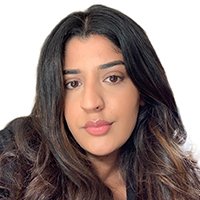Important information - the value of investments and the income from them, can go down as well as up, so you may get back less than you invest.
The whole point of a pick and mix is to get a variety of sweets. Whether you’re into cola bottles, peach rings or fizzy cherries, there’s no limit to many how you can choose. When it comes to your portfolio, it’s a little different.
Whether you’re an ISA or SIPP investor, or even both, chances are you hold a lot of your investments in funds. There are plenty of reasons why this is a sensible approach. But when you look at your portfolio, there may be some room for improvement.
When you invest in a fund, a fund manager will invest in whatever is appropriate according to the aims of the fund, so you can easily see where the fund can or cannot invest. Typically, fund houses will have a team of analysts to help guide these investment decisions. However, tracker funds, also known as index funds, work slightly differently. Rather than a team of analysts trying to choose stocks with the best potential, these funds are designed to mirror an index.
Each fund will tend to invest in a wide range of investments. When you hold a number of funds, the number of investments you hold can increase dramatically.
Sometimes, funds can overlap investments. For example, if you invest in 10 funds with a similar investment objective, you may find the holdings are similar and you’re not as diversified as you thought you were.
Depending on what kind of funds you hold in your portfolio, many funds will be the same ‘type’ - they may aim to meet similar objectives. For example, some funds may attempt to provide you with an income, while others may aim to increase your capital over a specific period.
One differentiator between funds is the sector they offer exposure to. For example, a global tracker fund may offer you exposure to a mixture of technology, financial and pharmaceutical stocks. Whereas a fund that targets the financial sector may only offer exposure to banks and fund managers.
A multi asset fund works in a slightly different way. This is a single fund that offers a spread of assets, including shares, bonds, and cash.
The type of funds you hold in your portfolio will depend on factors such as your investment goals and your risk appetite.
Our principles for good investing highlight the importance of diversification. It’s impossible to know which asset class, country, continent, or industry sector will perform best or worst in any given year, so it may be better to hold a mix of investments - also known as a diversified portfolio.
Diversification matters because some investments will perform well at a time when others don’t do as well, so they may help to balance each other out. Please note, diversification may not be appropriate for every investor.
So, what’s the ideal number of funds?
Well, there is no right or wrong answer. It can depend on a number of factors including the number of funds you’re comfortable monitoring in your portfolio, your investment objectives and risk appetite. While it’s important to have a mix of styles and strategies to achieve diversification, that doesn’t mean you need a long, unwieldy list of funds.
As mentioned above, the amount of funds you hold is dependent on the funds you are comfortable monitoring in your portfolio. Some investors may prefer to hold several funds, for others, holding one fund may be easier to manage. There are a number of tools on our website that can help you choose a fund.
If you’re an experienced investor, you might find our Investment Finder useful as it allows you to filter and compare a wide range of funds.
You can also check out our Select 50 which is a list of funds chosen by investment experts. It features active and passive funds, investment trusts and exchange-traded funds (ETFs).
And if you’re looking for some investing ideas, our Navigator tool can provide you with a diversified fund, based on what's important to you.
Funds are either actively or passively managed. A passive fund simply attempts to match the performance of a stock market index, such as the UK’s FTSE All-Share, or the Dow Jones in the US. The allocation of investments in the fund is based on the investments that make up the index. There is less human decision-making than there is with an active fund, so typically, charges are lower.
An actively managed fund involves a manager who decides which investments your money should be channelled into. They will use their experience and skill to choose investments. The fund charges are likely to be higher than those on a passive fund to pay for the fund manager and the research and analysis they have access to. It also gives you the reassurance of knowing that your investments have been selected by investment experts.
Important information - investors should note that the views expressed may no longer be current and may have already been acted upon. Tax treatment depends on individual circumstances and all tax rules may change in the future. Withdrawals from a pension product will not be possible until you reach age 55 (57 from 2028). Select 50 is not a personal recommendation to buy or sell a fund. This information is not a personal recommendation for any particular investment. If you are unsure about the suitability of an investment you should speak to one of Fidelity’s advisers or an authorised financial adviser of your choice.
Share this article
Latest articles
Bond markets take fright again over US borrowing – the week ahead
What's driving your investments this week?
The Warren Buffett gems you haven’t heard before
We trawled the Berkshire Hathaway archive back to 1977 in search his best say…




